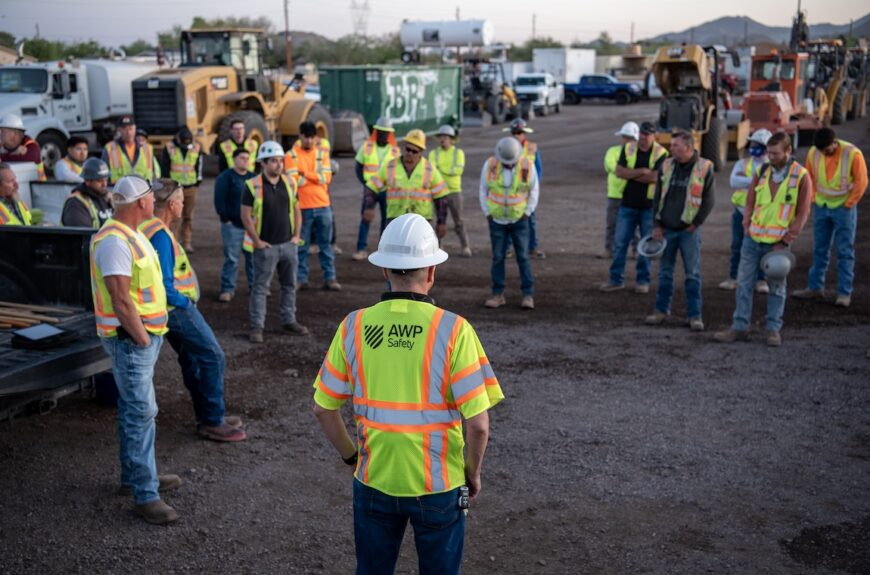
Transforming Work Zone Safety Through Automation
Smart traffic cones and automated flaggers are changing the game of work zone safety.

The paramount goal of traffic management is to keep workers and drivers safe. This basic traffic control tenet is nonnegotiable, and cutting-edge automation technology can help achieve it. However, using automation effectively depends on real-time data collection and deployment of the right technologies to gather it.
Managing traffic control is a constant balancing act. For projects of any size, engineers, managers and authorities often invest days or even weeks crafting plans that aim to meet everyone’s needs. These plans take into consideration a wide range of factors, including road conditions, traffic patterns, unpredictable weather and driver behavior.
Despite thorough preparation, unexpected challenges often arise in the field. Traffic patterns can change unexpectedly or sudden shifts in weather can complicate the situation. When these surprises occur, real-time adjustments are essential, occasionally leading to brief delays or temporary disruptions.
By integrating cutting-edge technologies like sensors, GPS-enabled tools and artificial intelligence, traffic control is moving beyond its one-size-fits-all solutions to more responsive, customizable and proactive systems that respond to changing traffic conditions in real time.
Why Automation Is Becoming Indispensable
Historically, work zones have revolved around standard traffic patterns because everyone understands how they operate. Following traditional patterns can work in many cases, but they are inflexible and don’t work as well when unexpected challenges arise. In those situations, automating the process is crucial.
Automation allows for both standard and semi-customized plans to be developed and implemented quickly and efficiently. The larger and more complex the project is, the truer this becomes. Smart traffic-control technologies can capture real-time data to identify patterns, anticipate problems and adjust on the fly.
For example, sensor- and GPS-enabled devices in smart traffic cones can alert traffic managers to vehicle speeds, flow rates and potential bottlenecks. If an unexpected traffic surge occurs, traffic managers will be alerted immediately and can adjust lane closures or reroute vehicles to keep traffic moving smoothly through the work zone. This data-driven approach prevents unnecessary delays and reduces the risks of accidents.
What Cutting-Edge Safety Technology is Available
More than ever before, traffic managers can capture granular insights from any work zone. Information concerning traffic patterns and on-site conditions, once considered beyond the reach of most workers, is now available. Two technological advancements have allowed this to occur:
- Smart Traffic Cones: Equipped with GPS and sensors, these cones send real-time data back to a central hub, allowing traffic managers to see vehicle speeds, congestion and flow trends. If speeding vehicles or sudden surges are detected, the system can trigger immediate action.
- Automated Flagger Assistance Devices: AFADs replace human flaggers in high-risk areas. Operated remotely, they allow for safer and more efficient traffic management. When paired with real-time data, AFADs can respond dynamically—adjusting signals to accommodate traffic buildups or unexpected detours without exposing workers to danger.
The combination of these tools can improve work zone safety and project efficiency at the same time. For example, these systems can open and close lanes as traffic flows vary during the day. During rush hour, more open lanes are necessary to keep traffic moving. As the day proceeds and traffic becomes less intense, automation allows work crews to adjust quickly and expand workspaces without halting progress.
IMPROVED ADAPTABILITY FOR COMPLEX PROJECTS
As the size of the infrastructure project grows, the more complex it can become. This often occurs over miles of roadway and project timelines of months—and sometimes even years. In such instances, traffic control is not a static proposition. Multiple crews may be working on different stretches of the project at the same time, including bridge repairs, paving or updating drainage systems. This is when static traffic control plans begin to falter and could put drivers or workers in danger.
As traffic control systems become more automated, traffic management becomes easier. If an accident happens or a detour becomes necessary, the real-time data allows traffic control teams to update digital signage miles in advance to prevent unnecessary traffic slowdowns. Properly deployed automation acts like an always-on traffic manager, predicting challenges, responding quickly and minimizing disruptions for both workers and drivers.
Automation allows the next phase of the project to continue seamlessly without the need to stop work and wait for a new plan to be created. Additionally, it combines standardization and customization in one unified program. It allows managers to use a reliable baseline plan and customize it in real time. This flexibility means work zones remain efficient (the advantage of using a standard plan) without sacrificing the safety of workers or drivers and keeps the project on time and on budget.
WHAT THE FUTURE HOLDS
The integration of automation into traffic control is already delivering measurable improvements in safety and efficiency, but not every worksite can yet integrate it into its operations. Additionally, putting these tools in place will require sufficient training for people and workers alike. It’s incumbent on the project managers to make sure their workers have an appropriate understanding of what automation can do and what it can’t. Seek out a traffic management supplier who offers this vital training, so the burden doesn’t solely fall on the people doing the work.
As AI and machine learning become better at synthesizing information rapidly, the possibilities surrounding automating traffic management will expand exponentially. Smart traffic cones and AFADs will communicate more effectively with each other and with the workers running them, offering greater precision and adaptability to traffic changes in real time.
At its core, the goal of traffic management automation is simple: ensuring that everyone, from the workers on the ground to the drivers on the road, gets home safely. By embracing automation and data-drive solutions, traffic managers can meet this goal while improving efficiency, reducing delays and responding to the complexities of modern infrastructure projects as they happen.
Learn more about AWP Safety’s Smart Work Zones, or request an estimate to see how AWP Safety can help improve your next work zone.



